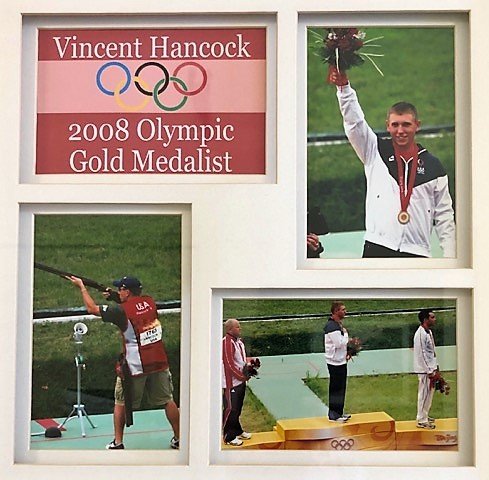We promised to highlight some of our OSHM team’s favorite museum artifacts or exhibits this year; however, Docent/Board Member Rufus Adair had a hard time choosing just one. Here are three of his very favorites. Maybe they will bring back your special teenage memories, remind you of other outstanding Georgians, or simply touch your heart with the story of a famous athlete’s loving kindness. We invite you to visit the museum and see Rufus’ choices up close!
These Are A Few of my Favorite Things
by Rufus Adair
My favorite things at the Old School History Museum tend to be those with “backstories” and sometimes-personal connections. I hope you will come to the museum for a guided or self-guided tour and choose your own favorites.
1) The Drug Store (entry to the museum) When school groups come through, that’s when I get to go behind the counter and play soda jerk. You remember, one of the “big kids,” 15 or maybe 16, white paper kiwi cap perched just so on the back of his head in cool flyboy mode. The barkeep for the pre-teen set: cherry Cokes and (real) ice cream cones mostly, but occasionally milkshakes, banana splits, floats, sundaes, and malted milks – if you had cut enough grass that week to pay for them!
2) Templeton Reid’s gold “coins” (History Gallery - on the Outstanding Citizens Wall). Reid grew up on the Oconee River frontier between Putnam and Greene counties. Instead of following his father as a ferryman (Reid’s Ferry; today’s Ga. 44), Reid worked with metals, primarily as a gunsmith and jeweler in Milledgeville. When gold was discovered in the north Georgia hills, Reid moved to Gainesville and worked as an assayer. To “help out” the miners with all that heavy gold ore, in 1830 he was reducing the ore to nearly pure gold and fashioning it into coin shapes.
Unfortunately, “nearly pure” – something like 99.3 percent pure – was not good enough for one speculator, who ran a notice in an Augusta newspaper calling Reid “no assayer.” Reid’s enterprise came to a screeching halt after only three months (and about 2,000 “coins,” most of which were re-smelted.) At Dahlonega, the feds quickly built the first U.S. mint outside of Philadelphia, which would eventually serve as the administration building for North Georgia College. In the 1990s, one of the remaining few of Reid’s gold “coins” sold for $40,000. And a 2016 coin collector’s guidebook listed an asking price of $1.1 million for one of the three known $10 “coins” by Reid. The Old School History Museum displays a photograph of a couple of the coins, but alas, the display is just that – a photograph.
3) Vincent Hancock (South Hallway): Framed collections of clippings and photos from Hancock’s Olympics gold medals in 2008 (Beijing) and 2012 (London), both in skeet shooting. In 2020, he would add a third in Tokyo. After the 2008 gold medal, proud Putnam folks quickly put together a parade and an open-air reception at the Plaza to welcome him back home. School children lined the sidewalks of Madison Avenue waving their small American flags. Hancock, his young wife, and newborn finally arrived for the Plaza greeting while aboard a fire engine. But instead of some kind of grand entrance to the gathered crowd in the park, the young family hustled off in the opposite direction, toward the Plaza’s doors. The consensus opinion among the crowd focused on the word “diaper.”
When the Hancocks returned, they passed by a young boy in a wheel chair. The 22-year-old Army sergeant paused, dropped to one knee and sat on his heel, so that the two were eye-to-eye. They spoke quietly for two, three, maybe four minutes. The crowd murmured, eventually hushed – and waited. I hope the boy was old enough to remember that moment today, for I certainly do.
Contributed by:
Rufus Adair
Board Member and Docent of Old School History Museum
Retired Newspaper Reporter and Teacher






